Tulips from ancient times have been attracted to themselves the attention of unusual forms of buds, painting and thin aroma. The first mentions about the tulips were found in the ancient Persian manuscripts, they admired the Khazif himself, their best poets were infrated. The very name of the flower received from the word "turban", as the bud is reminded by a particularly folded flap of matter. Today there is an incredible number of tulips varieties, but we decided to stay on one of the most unusual - terry.
General information about terry tulips
The tulip belongs to the family of lily onion plants and can be found in the middle of spring literally at every step: on the city flower beds, window sills, private gardens and just growing in front of the entrances of high-rise buildings. The height may be the most different: from 10 cm to 100 cm, but the root system of all consists of the apparent roots that produce the bulb below. They emit themselves everybody, and young bulbs form side shoots, on which subsidiaries are formed. In the fall after fading the plants, they are separated, thus reproducing the variety.
As a rule, tulip releases a single flower, but there are several multi-flower varieties. As for the color of the tulips, it may be the most different, and not necessarily monophonic. There are even completely black tulips - the pride of the Dutch selection.
Flowers can be a cupid, glazing, oval, lyilyevoid and other forms. Their sizes and diameter vary depending on the type. The feature of the flowers is that they close with the onset of twilight and dismiss again after dawn. In cloudy weather, buds are also tightly closed. At the end of the flowering period, three-edged boxes with flat brown seeds ripen. However, the basic rule should be remembered: with seed reproduction, the varietal properties of the parent plant are lost.
Classification of terry tulips
Since the varieties of tulips have a lot, a special classification was invented, allowing to navigate throughout this diversity. Due to the constant work of breeders, it was constantly corrected, but in 1981, the last classification was drawn up in Holland, dividing all varieties into 4 groups and 15 classes. She was accepted all over the world, and the sale is carried out with this data.
Tulips classification:
- Group I - Early. The first class includes red or yellow terry tulips with a height of 25 to 40 cm with glass-like boots.
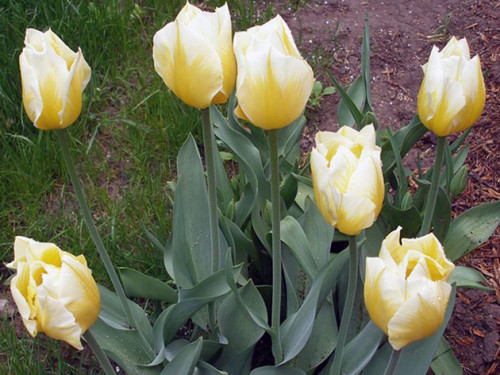
The second class is represented by early varieties with a height of 25 to 35 cm with bootons of warm shades (red, orange, yellow). Fully increasing, they reach 10 cm, flowering lasts for a very long time.
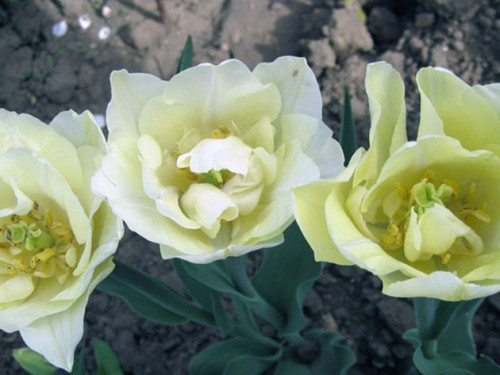
- Group II - Firmwerving. The third class includes plants with a height of 40-70 cm with large glassworm buds of different colors.
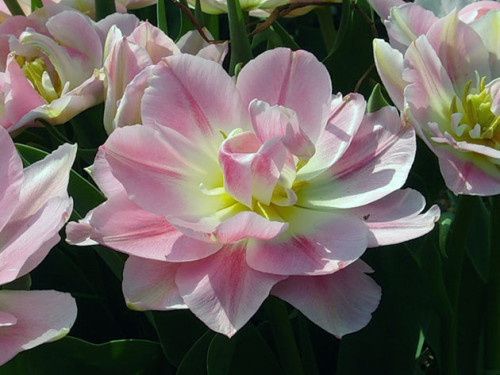
Fourth Class - Darwin Hybrids Height 60-80 cm. Distinctive feature - saturated red shades of buds, but there are varieties and other colorful, including two-color. It is worth noting the high stability of red terry tulips to spring frosts and spells.
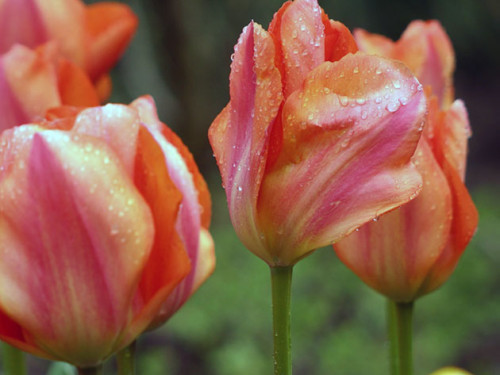
- Group III - Late Blowing. The fifth grade includes plants with a height from 60 to 75 cm with large glasswall buds with simple shape petals.
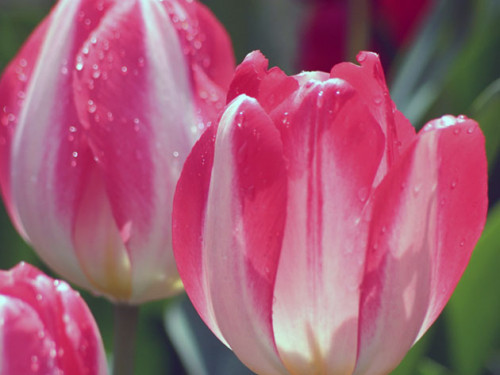
The sixth grade is represented by Liliece Tulips, named so due to the specific form of buds: the petals are bent and pointed. The height of the arrows is from 50 to 60 cm, the color can be any.
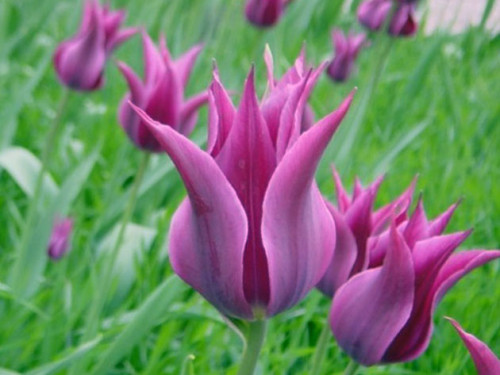
Buffling tulips belong to the seventh grade. Their characteristic feature is the needle-baked fringe on the petals. The height of the stems is from 50 to 80 cm, the color can be any, even brown and dark purple. It is noteworthy that the size and form of bud will depend on the type used to obtain this variety.
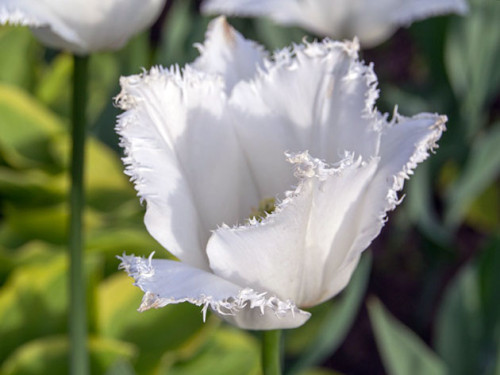
It looks very interesting to grade 8. The rear side of the petals remain greenish throughout the entire period of flowering. The height of the arrows from 30 to 60 cm, and the flowers themselves can be in length from 6 to 10 cm.
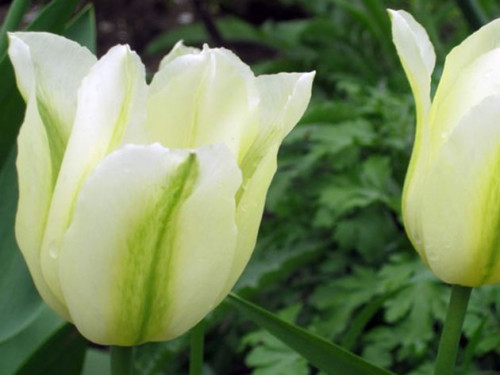
The ninth class is represented by Rembrandt Tulips. This is all the motley types of tulips. Wild boat buds are quite large and 7-9 cm long and length. The plant itself rises by 40-70 cm.
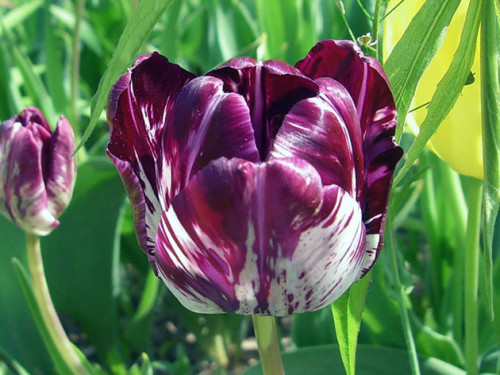
By the tenth grade include the most exotic tulips - parrot. They have very unusual petals with "ribbon" edges that resemble bird wings. Also, it is also impossible not to note the impressive dimensions of the flowers - in the disclosed form, their diameter can reach up to 20 cm.

Late terry tulips belong to the 11th grade. These are pioneered plants up to 60 cm in height and different color, including two-color.
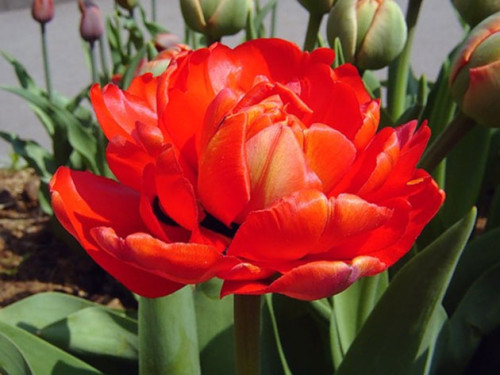
- Group IV - botanical. The twelfth class includes Kaufman Tulips, which bloom before all other types. They are although low (up to 25 cm), but with flowers of a beautiful star shape. Coloring can be any, but most often you can meet two-color. Another feature is purple specks or stripes on the leaves.

Foster tulips represent grade 13. These are plants with a height of 30-50 cm with oblong glass-shaped or cupid boots up to 15 cm. The color is most often allay or red-orange, but there are yellow and pinkish varieties. On fleshy leaves sometimes manifests purple specks.
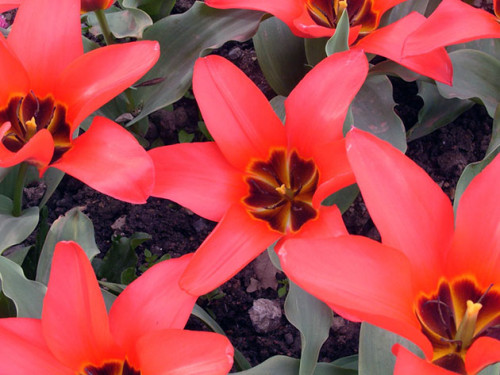
The penultimate 14 class is represented by Greag Tulips. It is an arrow up to 30 cm high with large buds and slightly bent back petals. Coloring mainly scarlet tones, but there are two-color shapes with grinding leaves.
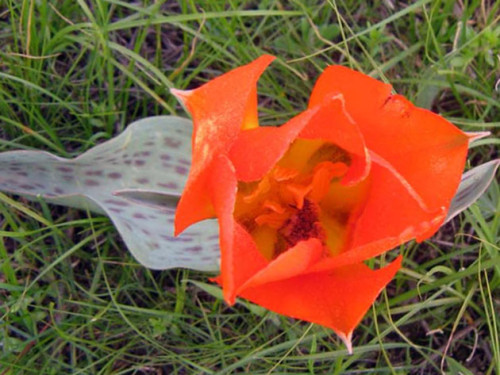
Finally, the 15th grade is botanical tulips, which include all wild forms. Typically, these are low Rannetic plants with the most different coloring buds.
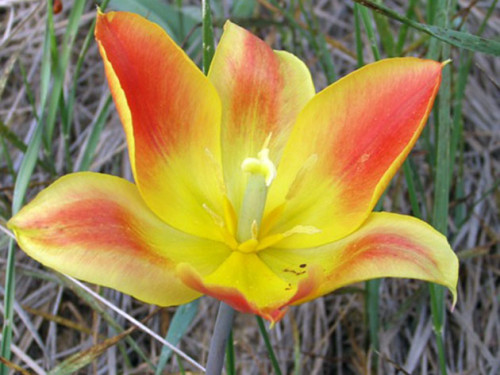
Above, we said that breeders constantly bring new varieties, and the classification of tulips should be updated from time to time. So, a new group has already appeared for quite a long time, which has not yet entered the registry, but has already won the hearts of flower water around the world - terry fringe tulips. These are densely terry flowers of a wide variety of shades with beautiful fringe edges.

Early grade terry tulips
As you can see, there are a lot of tulips species, but we are only interested in some. We propose first of all to consider early terry tulips. This is a very small class, constituting only 5.5% of the total number of forms. The main feature of these plants is that they bloom among the first and delight the eyes with lush and colorful buds. The bloom at the same time is rather long and can last more than 14 days.
It is not surprising that these terry tulips are most often found on city flowerbeds and summer cottages. They are rather unpretentious and the minimum attention is responsible for luxurious flowering. All early varieties are quite low (up to 35 cm) with durable flowers and large heavy flowers, which looks very impressive, especially if you put them along the borders or in the foreground of the flower beds.
What types of terry tulips are most popular:
- Monte Carlo - blooms with large yellow boots with a diameter of 10 cm. The plant itself reaches a maximum of 20 cm. It has high resistance to common diseases and temperature differences.
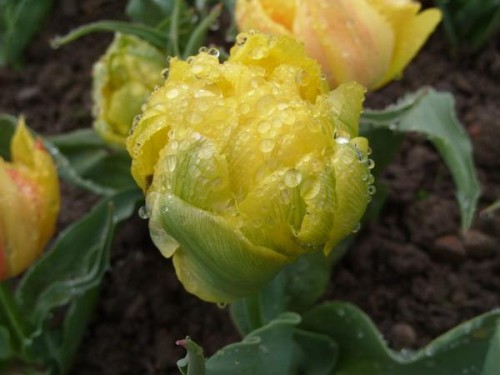
- Abba - a low-grade variety with red flowers, named after the Swedish pop group. Plants are in a height of only 10-13 cm, blooming about 14 days and look beautiful in low curb.
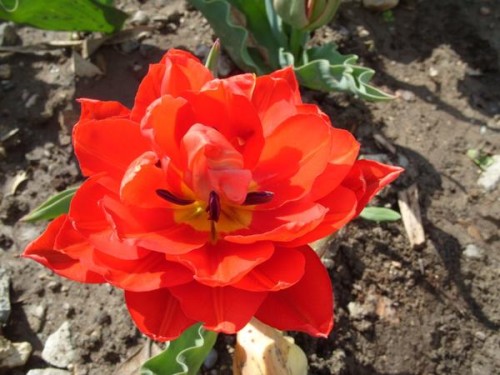
- Monte Orange - blooms large orange flowers placed on powerful, but low stems. There is good resistance to spring frosts.
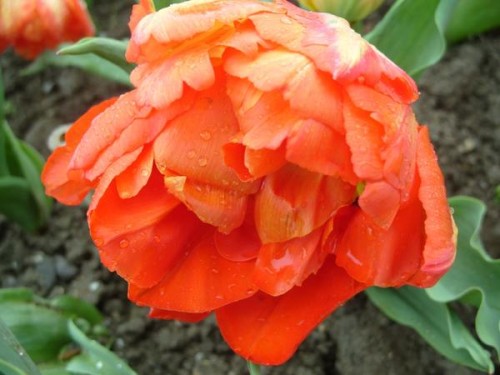
- Montrea - blooms with large white flowers, sourcing sophisticated flavor. Flowering lasts more than 2 weeks.
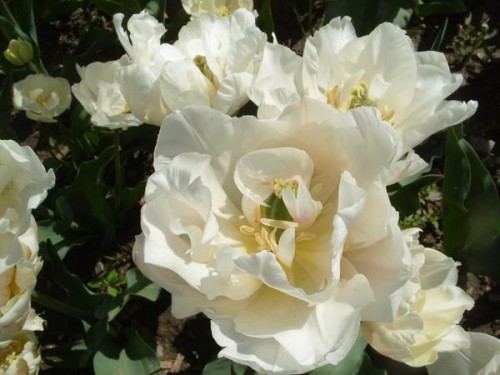
- The Queen of Marva - flowers pinkish-lilac large flowers, located on powerful stems with a height of 40-50 cm. Perfectly suitable for cutting and pastures in January-March. Well tolerates temperature differences and typical diseases.
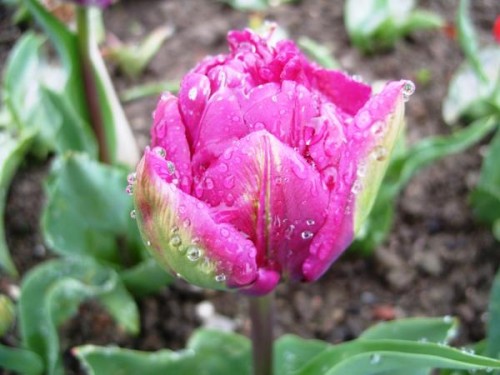
- Orange Princess - flowers with bright orange buds. The plant itself reaches the maximum height of 15-20 cm.
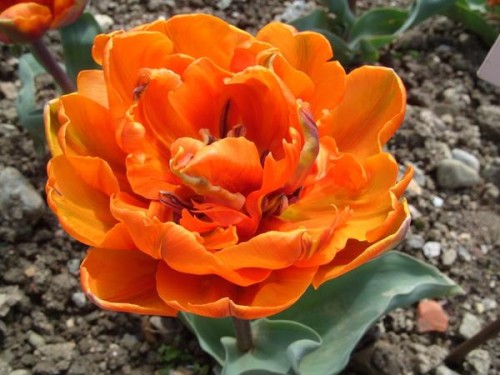
- Freman is another orange variety with large buds, which are revealed in a flower with a diameter of 12-15 cm.
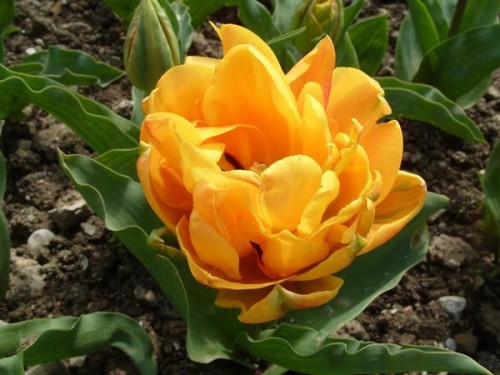
- Moncell is a two-color shape with yellow petals with red stripes. The flower in the opened form reaches 12 cm in diameter and blossoms on a 15-20 cm height stem.
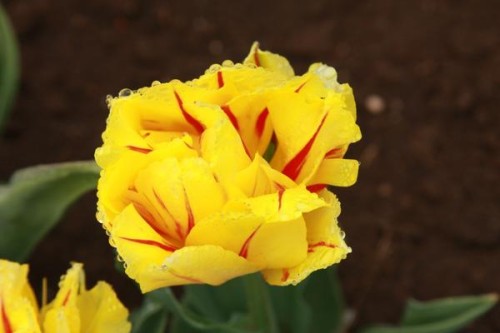
- The terry red is a rather unusual form, from afar resembling a large poppy. The diameter of flowers in the disclosed form is 12 cm.
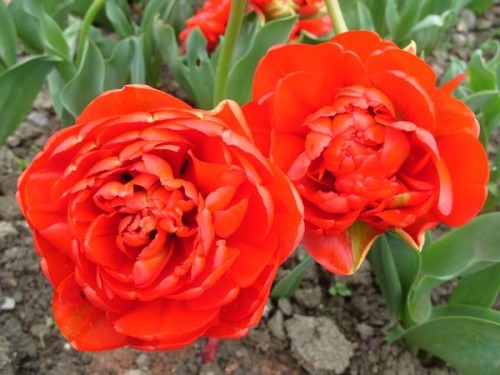
- Verona is a beautiful tender form with flowers of a pinkish-cream shade. The plant itself reaches 30 cm in height, and therefore pink terry tulips are perfectly suitable for cutting and distillation in January-March.
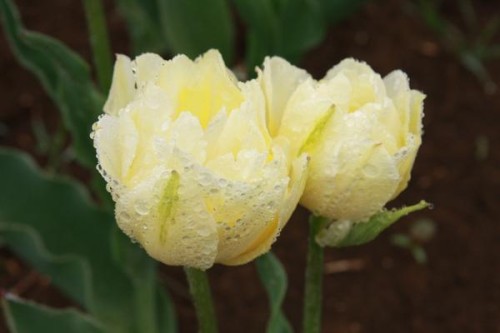
The bulbs of terry tulips do not give a lot of child processes, but care for them will not deliver a lot of trouble. They need to fertilize, like any other tulips, and to keep the valuable grade, it is necessary to dig up for the winter of bulbs and stored in a dry cool room.
Late grades of terry tulips
Rannuneyurizing varieties are good in their own way, but they are all pretty low. Lovers of high magnificent plants like later terry tulips. In the classification, they are listed under №11 and combine varieties with flowers with a diameter of about 10 cm with wide rounded petals. Because of the similarity with peonies, they are called pionic. And if the early grades are blooming at the end of April, late reveal buds in mid-May and bloom about 3 weeks before June. These are higher and strong plants up to 70 cm in height, so they are perfect for cutting.
Interesting: these tulips are called terry, because they have a double number of petals compared to ordinary, which is why it seems more lush and dense. In English, the late varieties call Double Late ("Double" - Double, "Late" - Late).
Late terry tulips appeared only in 1665, but today the major distribution received varieties received in the middle of the last century: Angelica, Miranda, Moncell, Mont Taroma, Renown Unicken, Ancho Tom, Apstar and others. However, breeders never sit without a case, and today there have already been many new interesting dense darling varieties, which can make decent competition to classical options.
The most interesting varieties of late terry tulips:
- Orange Angelica - a terry tulip, derived from the classic gentle pink Angelica and won popularity due to its unusual color.

- Dream Touch - blooms with large buds 10-12 cm in the diameter of purple-red. Blesley cut on petals gives a volume bud.
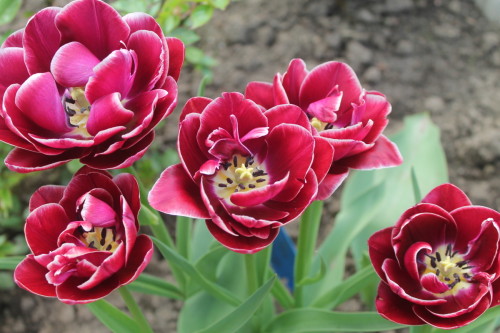
- Redwood - Fire-red flowers with a delicate satin texture. If we provide proper care to this variety, several buds can be formed on one blur.
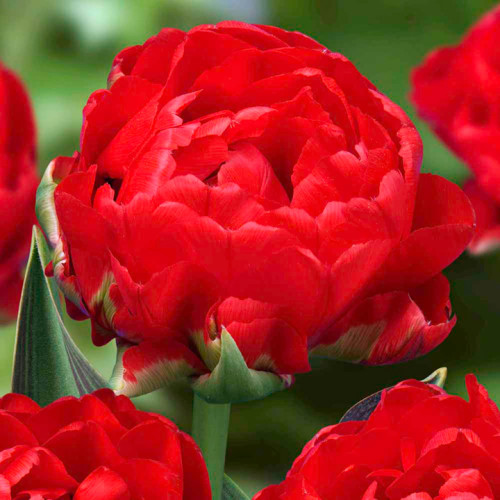
- Double bug of Apeldoorn (the second name of the Sanlavver) - a flower of orange-red shade with bright red strokes. Its feature is that the petals are tightly focused in the center of the flower.
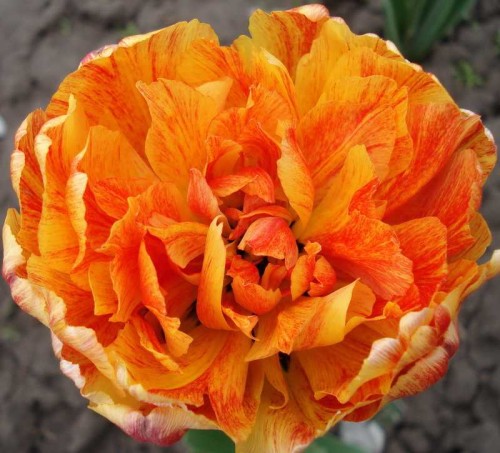
- The artist Double is a spectacular flower, at the same time combining three colors: yellow, orange and red.
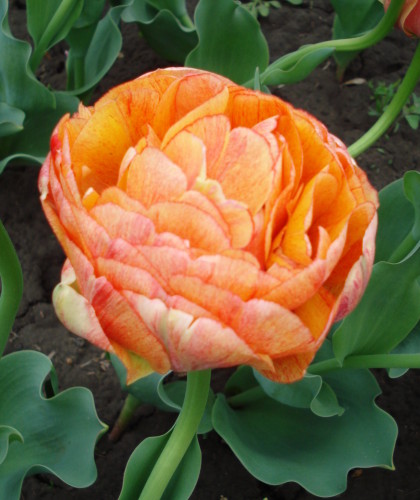
- Blue Diamond ("Blue Almaz") is one of the "blue" terry varieties. The flowering period lasts up to 3 weeks, perfectly suitable for cutting.
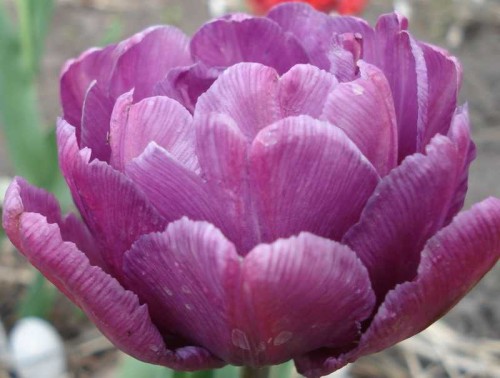
- Maskott - on a stem with a height of 40 cm blooming a lush terry flower of purple-blue color with a fringe along the edges of petals.
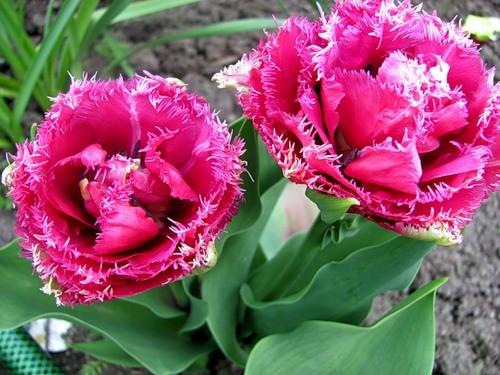
- Senshual Touch - flowers of orange or apricot shade very much resemble begonia, on the petals there is a light fringe and a thin edging. It is not afraid of spring rains and is perfect for cutting (it can stand in a vase for up to 10 days, without fading).
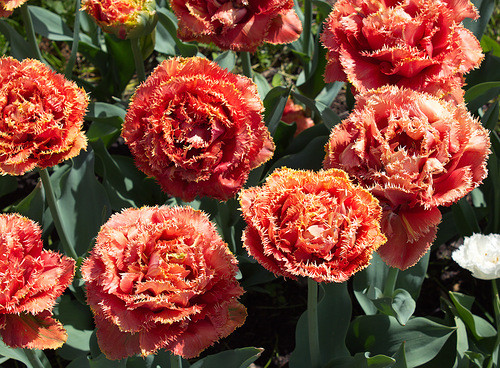
- Charming Lady - a derivative variety from Angelica with a height of up to 45 cm with large flowers with a diameter of up to 14 cm. The first time after the blooming flower holds a golden-apricot tone, but over time it becomes paler. Express a thin pleasant aroma.
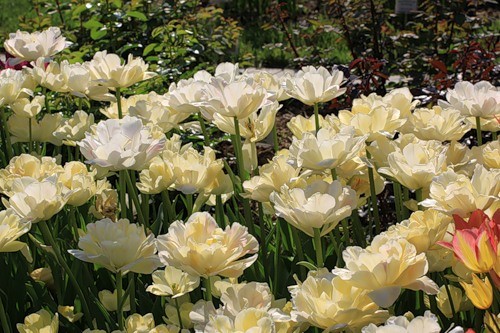
- Sweet Desire is a very gentle flower, combining lavender, white and pastel-pink shades and green specks on the outside of petals. It looks particularly beautiful from above, a high stem of 45 cm is perfect for cutting.
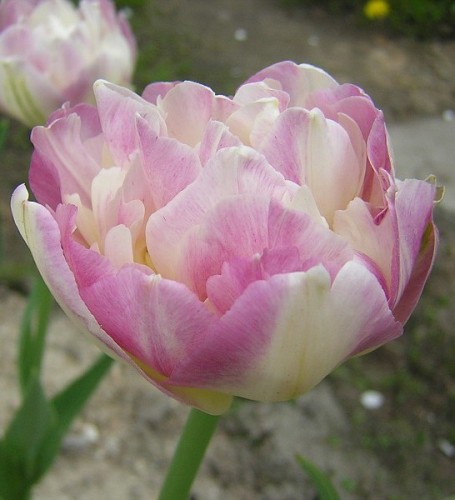
- Kartush is a very fragrant white terry tulip with a bright raspberry cut on petals that expands as flowering. The height of the stem is 40 cm, and therefore it is well suited for cutting and can stand in water up to 10 days.
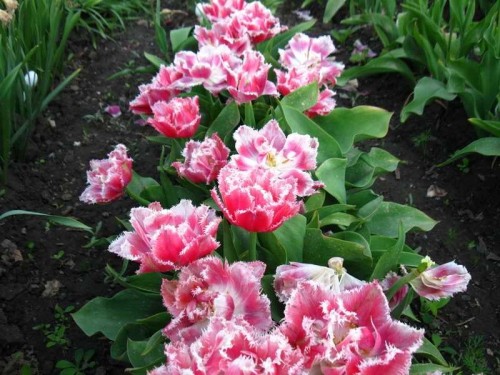
Features of growing terry tulips
The terry tulips look most effectively in the first rows of flower beds and flower beds, along the tracks or borders. The rules of their landing by and large are no different from growing all other types of tulips. It is necessary to burst into the bulb to third its heights and to withstand the distance between the plants at 10-15 cm depending on their size. Do not forget that the plants form a branched root system, which leaves 10-15 cm deep into, so the soil must be prepared to a depth of 20-30 cm.
The following agrotechnical recommendations will help you grow terry tulips:
- It is necessary to give feeding at least 3 times per season.
- It is possible to determine which fertilizers are needed by tulips, it is possible in the appearance of plants: if the foliage has become already and drooped, it means that nitrogen feeds are needed, if at the edges it cried, it means you need phosphorus and potassium.
- In the spring, patient copies need to be removed and burned together with a bulb, without breaking the earthen com, and in the remaining hole to pour a solution of manganese. Only so you can prevent the dissemination of the disease.
- The land around the flowers is extremely delicately, so as not to damage the delicate root system.
- In order for the next year to get the most magnificent flowering and keep the maternal bulb, cut the faded flower before the seed box is formed.
- Preparing the bulbs to wintering, dry them in the shade and in no case exhibit under direct solar rays.
- Do not feather tulips with fresh manure, otherwise the bulbs can be undermined, and fungal infections will develop.
- Slicing tulips, leave a couple of sheets on the stem, so that the bulbs continue to receive food through photosynthesis.


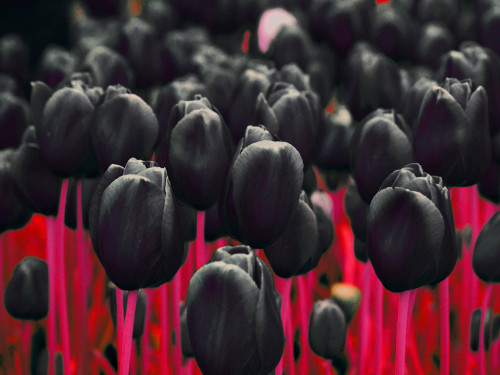
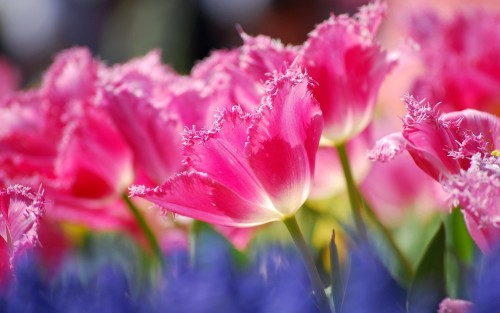

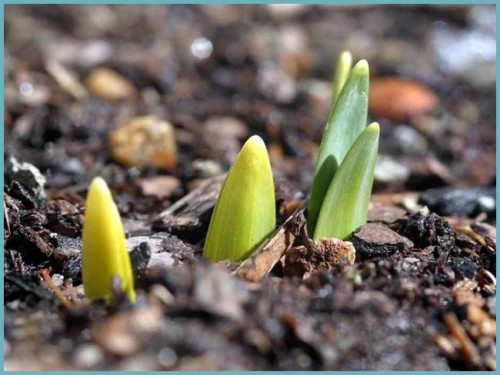
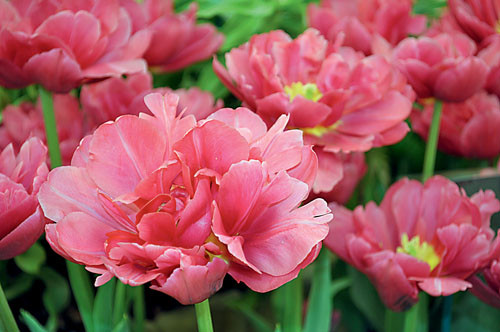
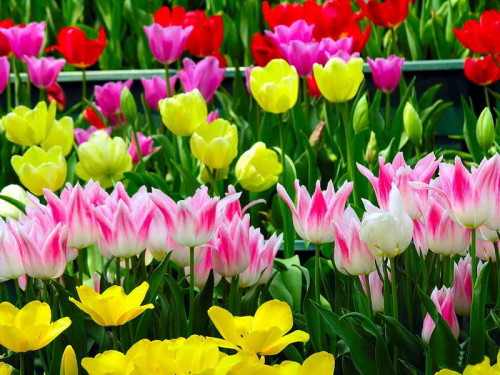
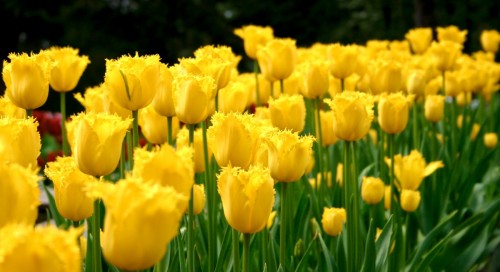
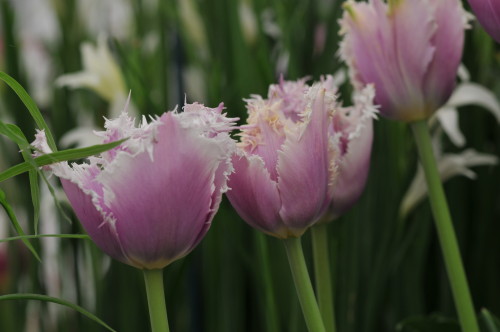
![2816x2112_640042_ [www.artfile.ru]](http://dachnaya-zhizn.ru/images/dacha/2816x2112_640042_www.artfile.ru_-500x375.jpg)
![1920x1200_525647_ [www.artfile.ru]](http://dachnaya-zhizn.ru/images/dacha/1920x1200_525647_www.artfile.ru_-500x313.jpeg)












 Start a discussion ...
Start a discussion ...